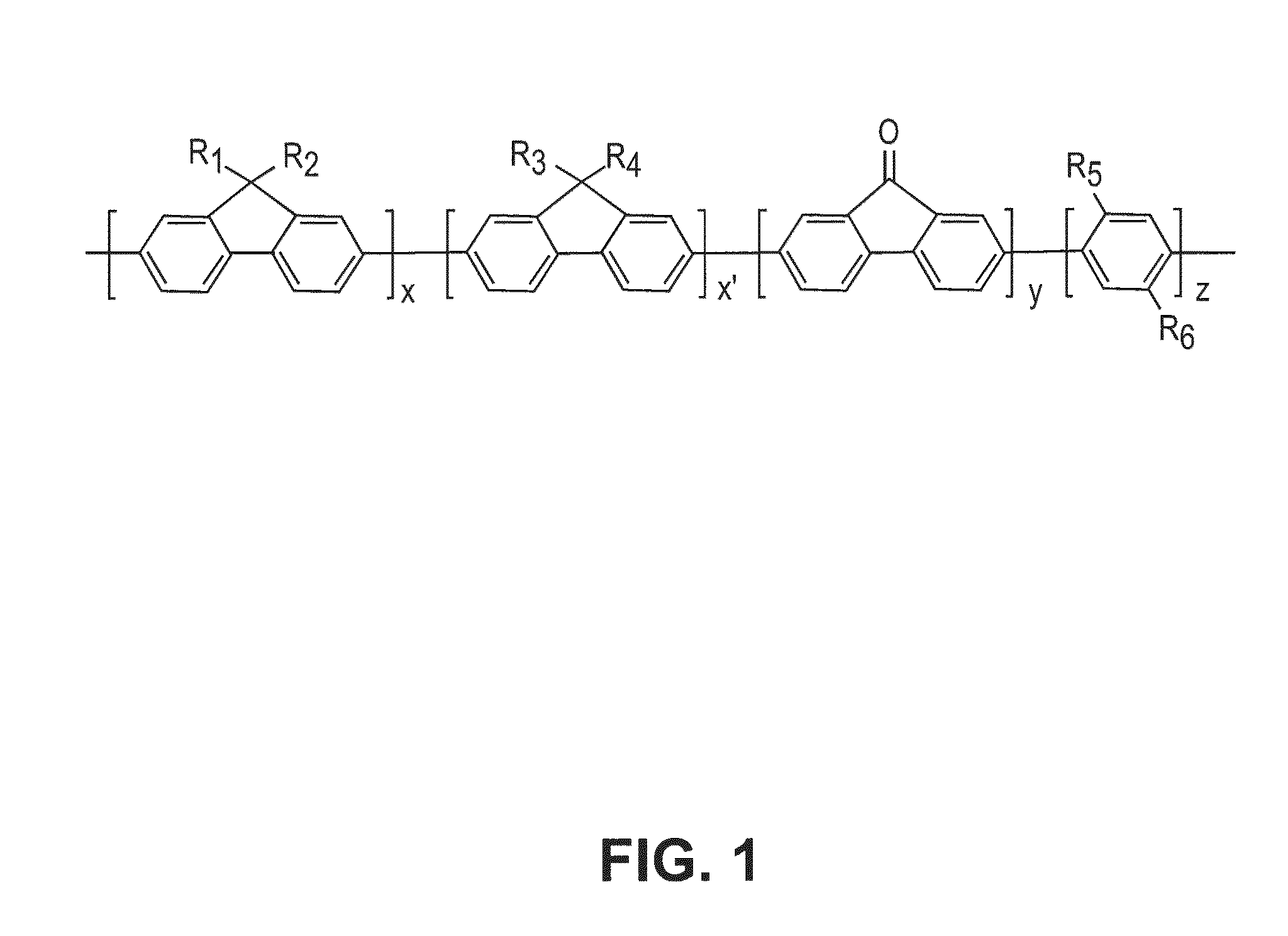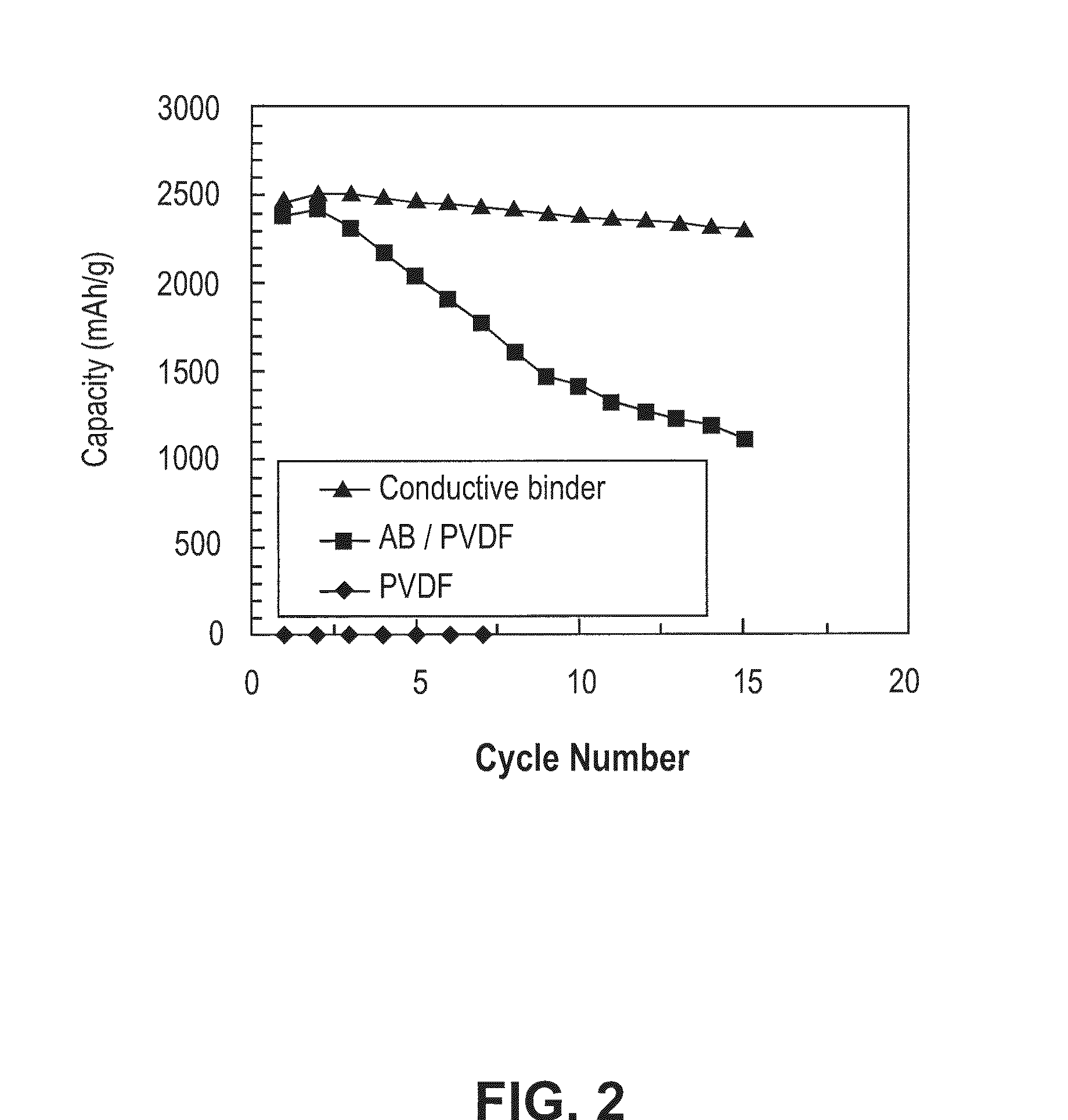Electronically conductive polymer binder for lithium-ion battery electrode
a lithium-ion battery and polymer technology, applied in the field of lithium-ion batteries, can solve the problems of significant capacity fade, particle fracture, and use as negative electrode materials, and achieve the effects of improving binding force, good electronic connectivity, and promoting current through the electrod
- Summary
- Abstract
- Description
- Claims
- Application Information
AI Technical Summary
Benefits of technology
Problems solved by technology
Method used
Image
Examples
Embodiment Construction
[0033]According to this invention the conductive polymers developed herein act as a binder for the silicon particles used for the construction of the negative anode. They are mixed with the silicon nano sized silicon parties in a slurry process, then coated on a substrate such as copper or aluminum and thereafter allowed to dry to form the film electrode. Though the silicon particles can range from micron to nano size, the use of nano sized particles is preferred as such results in an electrode material that can better accommodate volume changes.
[0034]A fabrication method for the synthesis of one embodiment of the binder polymer of this invention is as set forth below. First presented is a means for preparing one of the monomers used in polymer formation, i.e. 2,5-dibromo-1,4-benzenedicarboxylic acid, a reaction scheme for preparing this monomer illustrated at paragraph [0020], immediately below.
[0035]When the benzenedicarboxylic acid staring material has only one CH3 group, the rea...
PUM
| Property | Measurement | Unit |
|---|---|---|
| voltage | aaaaa | aaaaa |
| weight | aaaaa | aaaaa |
| thick | aaaaa | aaaaa |
Abstract
Description
Claims
Application Information
 Login to View More
Login to View More - R&D
- Intellectual Property
- Life Sciences
- Materials
- Tech Scout
- Unparalleled Data Quality
- Higher Quality Content
- 60% Fewer Hallucinations
Browse by: Latest US Patents, China's latest patents, Technical Efficacy Thesaurus, Application Domain, Technology Topic, Popular Technical Reports.
© 2025 PatSnap. All rights reserved.Legal|Privacy policy|Modern Slavery Act Transparency Statement|Sitemap|About US| Contact US: help@patsnap.com



